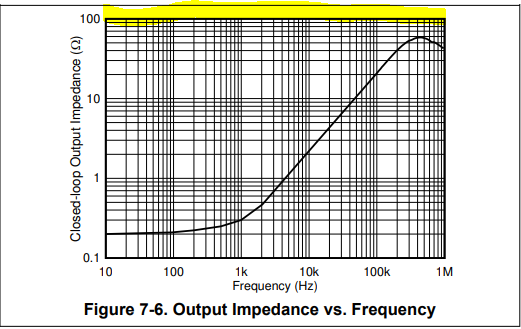Hello,
We are using a TMCS1107 to sense a DC motor current and the output of the device is noisy, +/-0.25 A (~100mV) noise on top of actual current measurements. We have LPF (100ohm and 0.1uF, RC) on the output before it goes into our ADC on the MCU and we still see the +/-0.25 A noise on the measurements. In the spec for this device there is a 'Max Capacitive load' of 1nF on the Vout pin. Is our RC causing this noise or is it the expected noise from this device? To try and reduce this noise we would like to increase the capacitance to decrease the LPF to improve the electrical averaging of the output, would we be violating the Max Load Cap spec in doing so?

Thank you.




